Hollywood, Predictive Programming and You: Are We Living in a Science Fiction Movie?
Hollywood, Predictive Programming and You: Are We Living in a Science Fiction Movie?
By David Gosselin
It’s one of life’s great ironies that fiction often comes closer to truth than anything else. The latest wire, headline, or speech notwithstanding, the greatest stories handed down to us over generations endure in ways that the typical Hollywood blockbuster or major news headlines rarely can. These stories do so because they capture something immutable and timeless about the nature of man, transcending both the time and space we inhabit. And yet, they are perennial reminders of the revelations awaiting within each of us daily.
How many other things can we say that about in life?
However, while fiction ironically possesses the magical ability to reveal the transcendent and poetical dimensions hidden beneath everyday reality, another kind exists. Unlike much of the greatest art which serves to shatter illusions and reveal the hidden truth of things (often hiding in plain sight), this art serves to create illusions. Imagine that one day some alien pod crash-landed in the land of timeless stories and fables and began spreading its legs, hatching its brood, and assimilating everything into its own image. Imagine that it began to do all this not by giving anyone orders or telling them what to think or do, but by influencing how they told stories and how they thought about stories—including their own.
After generations, this art ballooned into a vast entertainment industrial complex of storytelling and mythmaking, a modern Tower of Babel, replete with its own celebrity pantheon. From there, it used its growing storytelling industry to expand its reach and the mediums it employed to twist our actual reality. In its stead, it held up to the world the strange reflections of its own darkly enchanted mirror. Of course, these images were not the natural reflections of man created in the unique image of his Creator, but something very different, something curated by its own dark magicians and wizards. Now, imagine that by influencing how we told stories, these new agencies used their magic to fool us into re-imagining our own images, including those of our past, future and very own selves.
Imagine that the result was a magical transformation.
While many might have thought the incantations of these alien wizards and witches to be ineffective, only working on the most gullible, primitive tribes, imagine they actually worked. Indeed, as we’ve already seen in the past, the magical, trance-like qualities of fables, poetry and drama have been an effective means of shaping public opinion for centuries. In fact, Plato recognized the same thing going back to the times of Ancient Greece, where he observed the charming abilities and alchemical-like powers of poets and rhetoricians over the hearts and minds of Greek citizens. After all, the poets were the chief “image-makers” for the Grecian people. From their origin stories, the depiction of gods and the divine to exemplars of virtue and wisdom, Plato recognized that the charms of poets largely shaped the psycho-cosmological matrix of Ancient Greece. These “image-makers” did so by casting their enchanting shadows on the cave walls of Ancient Greek civilization. Of course, the same thing has existed in Persia, Babylon and countless other empires.
However, with the advent of Hollywood and the silver screen, this alchemical tradition of poets and priesthoods took on new magical dimensions. While Plato might not have foreseen exactly what form they would take; their illusive nature was intimated by his own understanding of the intricacies and complex nature of the shadows cast on the cave walls of his own Ancient Greece.
And this is where our story of wizards, magicians, and aliens begins.
The Magicians Strike Back
Fast-forward from the times of Ancient Greece to World War II and post-war America. The industrial revolution has unleashed a flurry of technological miracles, opened the door to an unprecedented world of abundance, and led to the rise of a new middle class confident about its right to have a say in its own nation and future. Such revolutions also seemingly shed a discerning light on earlier and archaic traditions of magic, witchcraft and superstition. Man was finally safe from the dark enchantments, superstitions, and wizardry of previous ages.
Or so he thought?
Enter psychosurgery evangelist Dr. William Sargant.
Sargant has completed his travels after years of profiling various primitive tribes and ancient cultures across the globe, including in Zaire, Haiti, Brazil, Jamaica, and the USA. A friend and correspondent of Aldous Huxley, Sargant undertook his travels in order to understand the seemingly magical transformations individuals experienced at the hands of shamans, priests, magicians and faith healers. Sargant tells the story of how these magicians and storytellers managed to cast their spells and apply their charms across the ages.
From spirit possession in Haitian voodoo rituals to visceral images of hellfire invoked by fundamentalist Christian preachers in the revivalist South, Sargant observed that heightened emotional states could be used to artificially induce radical changes in belief and behavior.
This could be achieved by creating emotionally heightened conditions whereby the physiological states necessary to create a new cathexis between thoughts and images emerged. In a word: by overwhelming the conscious mind under the right environmental conditions and bio-chemical influences, magicians and faith healers could gain access to the subconscious mind. This would allow them to not only act on man’s immediate sensory apprehension of the world, but to also access his dreams, imagination, and deeper sense of self—often with his knowing.
Of course, like many modern magicians, this “magic” was understood to be strictly bio-chemical in nature. For Sargant, lobotomies were still the most “magical” treatment for numerous psychic and spiritual problems. Regardless, the types of “magical” tricks studied by Sargant throughout his travels fall under the category referred to by modern hypnotists as induced states of altered consciousness, or simply “altered states.” Reporting on his findings in one of his books, Sargant writes:
“From the Stone Age to Hitler, the Beatles and the modern ‘pop culture,’ the brain of man has been constantly swayed by the same physiological techniques. Reason is dethroned, the normal brain computer is temporarily put out of action, and new ideas and beliefs are uncritically accepted. The mechanism is so powerful that while conducting this research into possession, trance and faith-healing in various parts of the world, I myself was sometimes affected by the techniques I was observing, even though I was on my guard against them. A knowledge of the mechanisms at work may be no safeguard once emotion is aroused and the brain begins to function abnormally.”
Dr. William Sargant — The Mind Possessed: A Physiology of Possession, Mysticism and Faith Healing (1971)
Parallels between ancient religious rituals, artistic festivals, and spiritual practices handed down from generations could be observed in modern culture, albeit under ostensibly different circumstances. Sargant observed parallels between ancient rituals and, say, the mass hysteria and euphoria of a Beatles concert, Woodstock festival, and other forms of mass culture typified by “pop groups”:
“Many of the other dancers approached very near trance and showed states of increased suggestibility at the end of a long and intensive period of repetitive and monotonous dancing. They looked very much like fans of the Beatles or other ‘pop groups’ after a long session of dancing.”
Dr. William Sargant (p. 118) — The Mind Possessed: A Physiology of Possession, Mysticism and Faith Healing (1971)
The likes of Sargant and Huxley drew direct parallels between “rock” festivals and the kinds of orgiastic dancing and frantic emotional states typical among participants at alcohol and orgy-fueled festivals for the God Dionysus. As Huxley observed in one of his lectures, individuals participating in ancient Dionysian rites and the kinds of practices studied by Sargant could live very wretched lives, spending most of their weeks in some kind of slave-like bondage, but then find a release or “catharsis” in ritualistic and frenzied festivals. This occurred through intense, albeit momentary transformations in affect and disposition, often augmented by sex, drugs, narrative and spectacle.
With the advent of the twentieth century, these more ancient forms of magic began to take on new dimensions, especially within the world of modern cinema.
And this is where a new story emerges within our story of man’s story.
Pulling Back the Curtain
It has been observed that the story of art is the story of man. But in light of recent revelations concerning the relationship between intelligence agencies, the industrial entertainment complex, and the world of modern art, interest in what lies behind the magic of the Hollywood curtain has surged.
For our purposes, consider the new images depicted in twenty and twenty-first century stories as the shadows cast on the modern cave walls of the “silver screen” and Hollywood. These industries and their related online streaming services boast of many “good movies” with compelling storylines, dialogue, plots and character development—many of them essentially respecting the formal rules of Aristotle’s classic Poetics. However, what images these films have portrayed, or how they portrayed their subjects and images, and how these films may or may not have collectively colored the imaginations of a population is a less popular subject. Perhaps it’s simply because the effects are as profound as they are hard to measure? Although it goes beyond the scope of our essay, we can observe that at different times different films presented various messages with varying degrees of subtlety, whether cultural, philosophical, or political. Today, popular YouTube channels like those of Hollywood historian and scholar Jay Dyer have been created to decipher the magic of modern movies.
One clever, covert hypnotic technique involved in these forms of fiction is “priming.” As one variety of priming, individuals can be made to watch somebody else live out an experience, at which point a dissociation can be created: individuals or entire audiences live out new narratives and stories through the characters in films. Today, a vast priming industrial complex invites people to regularly disassociate from their own lives and play out various scenarios and dystopian futures.
But everyone knows it’s only fiction.
For instance, in the latest Mission Impossible: Dead Reckoning I, a rogue AI entity assumes control over the world. It uses human beings as its avatars to play out various games and scenarios. No one is sure who or what is real, and multiple possibilities exist, but everyone is convinced that they must play the game, essentially deferring the question of greater reality to “the Entity.”
Sound strangely familiar?
Amidst the mass confusion, a recurring theme and incantation appears in the film: nothing is real. Reality is impossible to discern; audiences must defer their reasoning powers to the all-knowing AI entity. Here we see modern hypnotic techniques at play which allow a message or command to sink into the subconscious mind. The technique works by creating what world-leading hypnotist and NLP co-creator Richard Bandler calls a state of “gentle confusion.”
By flooding the conscious mind with details in a confusing but artful manner, the conscious mind is overwhelmed, such that the subconscious mind is now opened and ready to receive new “information.” In a word: a clear message is embedded and communicated through a nest of confusing statements.
Bandler refers to this as “stacking realities,” which often involves telling a story within a story within a story within a story. The speaker or narrative may suggest one thing, but then mean another, or something completely contrary (Bandler gives the example of “don’t think about the color blue”). The speaker may be talking about one thing, but then saying another. Which details belong to which story remains unclear on a conscious level, but with the proper “nesting” and “sequencing,” listeners are left with a set of instructions which they can naturally carry out on an unconscious level.
As Bandler writes in his “Guide to Trance-formation”:
“Once you have moved through several levels of realities, you can begin to embed process instructions about what you want the client to do. Any of the relevant language patterns, particularly the Milton Model “Quotes Pattern” may be used, as can the various techniques outlined in this book. The client is likely to be especially compliant—and will also, almost certainly, have amnesia for precisely what the instructions were. But, expect his experience and behavior to change, apparently spontaneously.” (Bandler., 173-174)
At this point, it might be worth noting that Bandler was a student of anthropologist and sociologist of CIA MK-Ultra notoriety, Gregory Bateson.
Aside from conducting experiments on shell-shock and trauma victims with LSD for the CIA’s MK-Ultra programs at the Menlo Park VA Hospital, Bateson also taught at the University of California in Santa Cruz, where he encouraged Bandler to take on a hypnosis project and develop hypnosis into a complete and formalized system. With the collaboration of John Grinder who also taught Bandler at Santa Cruz, the result was the creation of Neuro Linguistic Programming (NLP), whose insights have been thoroughly adapted and integrated into modern public messaging, entertainment, and the “self-help” world across the West.
But we digress.
Not surprisingly, the same techniques in hypnosis and narrative structure, which appear in some interesting ways in Mission Impossible, have an uncanny and strange resemblance to today’s discourse on the role of AI in shaping decision-making for the entire human race. Take the recent discussion between World Economic Forum (WEF) guru Yuval Hariri and Stephen Colbert on The Late Night Show with Stephen Colbert.
The interaction and transcript of the recent discussion is reproduced by Slaynews.com as follows:
Harari explained to viewers that throughout history people have always known what they had to teach the next generation, such as farming, building, fighting, etc.
Now, with the rapid evolution of technology, people have no clue what to teach their children and grandchildren to best prepare them for the world.
Half joking, Colbert asked, “Do we need to teach our young people anything now that AI is here?”
“How to deal with it,” Harari quickly responded, adding, “It’s still a baby, AI. We haven’t seen anything, yet.”
However, while Harari was warning the general public should prepare for the looming AI takeover, he changed his tune when Colbert declared that he’s ready to put “the machines” in charge now to “tell us what to do.”
The self-described transhumanist appeared reluctant to surrender to “the machines” himself.
“A lot of people are worried,” Colbert said about AI’s role in the future of humanity. “I’m not that worried about AI.
“It just doesn’t get my blood going to get worried about AI. I think of some positive aspects of it. I mean, I have seen how humans have handled history and – not great. So I’m ready for the big machines that make big decisions programmed by fellows with compassion and vision. I’m ready for the machines to tell us what to do. Are you?”
“Not really,” Harari answered.
“It’s extremely dangerous to give up power to something we don’t understand.”
Colbert tried arguing AI technologies are just an extension of mankind and refused to accept reality when Harari said, “No, they’re not.”
“Yes, they are,” Colbert retorted.
“We made them. They are us.”
The WEF advisor explained that while humans did create AI, it is “the first technology in history” that can think and act on its own without mankind’s oversight.
“We made them, but now they become potentially independent of us,” he said.
“The one thing to know about AI, the most important thing to know about AI, it’s the first technology in history they can make decisions by itself and can create new ideas by itself.”
Is mankind’s future now going to be directed by an AI? Is this a movie, reality, or simply the latest example of predictive programming by the magicians behind many of the most popular “science-fiction” stories?
With even basic knowledge of hypnotic technique, one can understand how “fictional” stories can be used to prime audiences, or induce “altered states” simply by making the right suggestion or asking someone to imagine and play out a given set of images. By having audiences play out scenarios, they’re made to rehearse them in their imaginations—always veiled as entertainment, of course.
The real question becomes: what happens when we ask the same audiences to imagine a future markedly different than the ones they’ve been primed with for years, if not decades? What does or should an alternate and potentially much healthier, real future look like?
And here is where the “magic” of films becomes perhaps clearer.
While heavily guarded by the magicians and their industries, once their spell books are opened and the structure of their spells is revealed, it becomes very difficult for even the most bewitched spectator to unsee.
It’s Only Fiction
Chief among the genres shaping twentieth-century Hollywood “cave paintings” has been the world of so-called science-fiction. With this genre, a new vast pantheon of images was birthed by magicians. More alarming is the fact that a number of these practitioners of wizardly had very close ties with military-intelligence and related agencies.
Take the example of H.G. Wells, the father of modern science-fiction. Wells happened to be one of most outspoken minds for world government, population control and global eugenics programs in the early twentieth century. As author and literary critic John Carey writes of Wells in his The Intellectuals and the Masses: Pride and Prejudice Among the Literary Intelligentsia, 1880-1939:
“In his non-fiction works Wells committed himself to formulating ways in which his dreadful future could be averted and the world population controlled. As he saw it, the main problem was the mass of low-grade humanity such as inhabits the underground in When the Sleeper Wakes. All over the world, he observes in Anticipations, published in 1901, ‘vicious, helpless and pauper masses’ have appeared, spreading as the railways systems have spread, and representing an integral part of the process of industrialization, like the waste product of a healthy organism. For these ‘great useless masses of people’ he adopts the term ‘People of the Abyss,’ and he predicts that the ‘nation that most resolutely picks over, educates, sterilizes, exports or poisons its People of the Abyss’ will be in the ascendent.” (Carey., 123)
This was the father of modern science fiction.
Wells also happened to be one of the leading minds within Fabian Socialist circles and Britain’s elite literary intelligentsia, including Lord Bertrand Russell, Bernard Shaw, D.H. Lawrence and many popular writers. ALl were committed to global eugenics, world government and the establishment of a modern Liberal imperial order, or as Wells once called it, a new “liberal fascisti.”
From War of the Worlds and The Time Machine to The Island of Dr. Moreau and The World Set Free, Wells would continuously anticipate and re-imagine the future of humankind. So, Wells continuously played out scenarios in imaginative ways. For instance, in The Time Machine Wells describes a world in which humanity has split off into distinct races, the dirty Morlochs living in underground caves and performing intensive physical labor, and the indolent, aristocratic race of Eloi, who live high above the ground in luxury and ease. In The First Men in the Moon, Wells describes an advanced race of beings who’ve attained such evolutionary excellence that their physical attributes are defined by the narrow tasks they must perform within the greater colony, from those with extended skeletons or antennae to those with giant brains, “wabbling jellies of knowledge.”
Underlying both his fiction and non-fiction was the idea of the need for a human race under the tight control of a scientific priesthood, which would preside over a new world religion of eugenics and global government responsible for selectively breeding humans. Sometimes, the breeding would result in disaster, as in The Island of Dr. Moreau; sometimes the inventions in his “fictional” works would lead to near-extinction and pave the way to global governance, as in The World Set Free; but at every turn, Wells was priming the imagination and offering a new world outlook under the guise of “fiction.”
Stranger in a Stranger and Stranger Land
Now, what if you found out that many of the most popular and catalytic science fiction stories since the time of Wells originated from the same small tribe of not-so-veiled Luciferians? Take the case of Frank Herbert, L. Ron Hubbard and Robert Heinlein.
As explored in a New Republic article titled “Charles Manson’s Science Fiction Roots: How L. Ron Hubbard and Robert Heinlein Influenced a Murderous Cult,” these works would lead to all sorts of historical truth is stranger than fiction events. Let’s start with the most infamous:
“In 1963, while a prisoner at the federal penitentiary at McNeil Island in Washington state, Charles Manson heard other prisoners enthuse about two books: Robert Heinlein’s science fiction novel Stranger in a Strange Land (1961) and L. Ron Hubbard’s self-help guide Dianetics: The Modern Science of Mental Health (1950). Heinlein’s novel told the story of a Mars-born messiah who preaches a doctrine of free love, leading to the creation of a religion whose followers are bound together by ritualistic water-sharing and intensive empathy (called “grokking”). Hubbard’s purportedly non-fiction book described a therapeutic technique for clearing away self-destructive mental habits. It would later serve as the basis of Hubbard’s religion, Scientology.”
As an isolated event, it would be completely fair to treat such horrors as coincidences. However, as it turns out, Herbert, Heinlein and Hubbard all wrote for the same pioneering science fiction publication, Astounding Science-Fiction. The magazine was overseen by editor John Campbell, author of the science fiction novella Who Goes There? Campbell’s novella was famously adapted as the screenplay for The Thing, which tells the story of a shape-shifting killer alien which can mimic and imitate any other human or life form, leading to mass paranoia and death among humans trapped in an arctic research base. But what was the goal of all these writers?
As the author of The New Republic the article explains:
“In truth, the hidden thematic concern of “hard science fiction” was always mystical transcendence, of imagining how the promise of religion could be fulfilled by technology in the space age. Time and again, Campbell’s writers, not just Heinlein and Hubbard but also Frank Herbert of Dune fame, conjured up technological paths to transcendence.”
The article goes on to recount the peculiar ways in which the illiterate life-time criminal, Charles Manson, who couldn’t help finding himself back in prison no matter what he did, magically managed to create a new kind of family, infamously dubbed “The Family”:
“Manson won them with a doctrine of communal bonding: They would be a family and share in all things, including love. Manson’s made-up religion was a cut-and-paste invention that borrowed from many sources. As The New York Times notes, Manson’s philosophy was “an idiosyncratic mix of Scientology, hippie anti-authoritarianism, Beatles lyrics, the Book of Revelation, and the writings of Hitler.” But the sci-fi component was pronounced. Stranger in a Strange Land provided the Manson family with its rituals (water-sharing ceremonies), terminology (“grokking”), and promise of transcendence (Manson’s followers hoped that, like the hero of Heinlein’s novel, they would gain mystical powers). The dream of mind triumphing over matter was also the sales pitch of Dianetics.”
This could still all be pure coincidence, but Heinlein himself also enjoyed creating and curating his own free-love sex cult:
“Heinlein was in an open marriage with Leslyn, a poet and script editor. He had a habit of encouraging his close male buddies to take Leslyn as a lover. As Hubbard would later marvel, Heinlein “almost forced me to sleep with his wife.” Sharing his wife’s body was a form of male bonding for Heinlein, and it served as a precursor to the communal orgies that he imagined in Stranger in a Strange Land, which helped the members of his imaginary religion form group solidarity.
“Hubbard and the Heinlein also shared an interest in the supernatural. Together with their friend Jack Parson, a rocket scientist, they investigated the teachings of the occultist Aleister Crowley and tried their hand at black magic.”
Not unlike Heinlein or Manson, Hubbard also had a thing for creating his own cult following. As revealed by his son, L. Ron Hubbard himself believed he was the literal reincarnation of Lucifer. The science of Dianetics, which formed the basis for a Hollywood-controlling cult known as Scientology, was the original “self-help” guide, supposedly offering man the means to attain his fully self-actualized self.
Whether it meant doing all your own movie stunts like a fully self-actualized would-be black-ops agent like Tom Cruise, creating your own new religion to unlock the hidden “human potential” of high-performing individuals like Hubbard himself, or painting with fake baby blood and writing out spirit cooking recipes on walls to challenge the “limits” of human beings and performance art like Marina Abramovic, the world of “self”-help has been at the center of the efforts to change what the image of a whole, healthy and happy human being is. In many ways, the “self-help” movement was the crucial trojan horse that helped repattern and re-center Western civilization away from a healthy image of the self made in the unique image of God to an outright worship of the self, without any context or higher notion of natural law existing beyond the realization of one’s mere absolute will.
Not surprisingly then, the New Republic article reports that Heinlein and Hubbard got along very well:
“Heinlein and Hubbard first met in 1939 and immediately hit it off. To his wife Leslyn, Heinlein described Hubbard as “our kind of people in every possible way.” (The friendship between the two men is described in William Patterson’s two-volume biography of Heinlein). They were both prolific pulp writers, contributing heavily to Astounding Science-Fiction, which was revolutionizing the field under the editorship of John W. Campbell.”
And as it turns out, Hubbard and Heinlein were both retired US naval officers and were both associated with the satanic Agape Lodge of the Ordo Templi Orientis, at one time run by satanic “beast man” extraordinaire himself, Aleister Crowley.
Unfortunately, but not surprisingly, like Hubbard many of Heinlein’s supposed fictional ideas became all-too real:
“Heinlein meant Stranger in a Stranger Land to be a jape, a satire on religion. While Hubbard had turned science fiction into a religion, Heinlein was trying to turn religion into science fiction. But many readers took it all too seriously. In March of 1969 at a film festival in Rio, Heinlein met a charming actress named Sharon Tate. A few months later, she was murdered by a cult that took inspiration from Heinlein’s novel.”
Alas, at least two of the three Astounding Science Fiction authors shared the same essential Luciferian-Futurist ethic in various ways. From “free love” to “self-help,” sci-fi served as a clever means of spreading this new ethos for a new kind of bold, fearless, self-actualizing humanity that was ready to unlock its deeper, hidden “human potential.”
The last of the Astounding Science-Fiction trio was none other than the author of the Dune series, which is still spinning off new blockbuster films in 2024. In the case of Frank Herbert, a gifted storyteller no doubt, one of his admirer’s famously sent a copy of Dune to J.R.R. Tolkien to get his opinion on the beloved sci-fi work. Tolkien had the following to say about it:
“It is impossible for an author still writing to be fair to another author working along the same lines. At least I find it so. In fact I dislike Dune with some intensity, and in that unfortunate case it is much the best and fairest to another author to keep silent and refuse to comment… Would you like me to return the book as I already have one, or hand it on?”
Perhaps Tolkien got some bad vibes from the deeper outlook on man presented by Herbert as “fiction.” In all cases, Herbert, Heinlein and Hubbard presented their own but complementary outlooks on human nature, always veiled in the form of entertaining, action-packed stories.
At this point, we understand that this story is strange enough, but it gets stranger and stranger and stranger. So, why stop now? In David McGowan’s book Weird Scenes Inside the Canyon, the author describes the genesis of the so-called “Peace and Love” generation in Laurel Canyon, which manages to tie into our story in another truth is stranger than fiction way.
As McGowan writes:
“Another famous resident of Laurel Canyon was science-fiction writer Robert Heinlein, who resided at 8775 Lookout Mountain Avenue. Like so many other characters in this story, Heinlein was a graduate of the US Naval Academy at Annapolis and he had served as a naval officer. After that, he embarked on a successful writing career. And despite the fact that he was, by any objective measure, a rabid right-winger, his work was warmly embraced by the flower-power generation.
“If that capsule biography sounds vaguely familiar, by the way, it is probably because it is virtually identical to the biography of a guy named L. Ron Hubbard, whom you may have heard of.
“Heinlein’s best-known work is the novel Stranger in a Strange Land, which many in the Laurel Canyon scene found to be hugely influential. Ed Sanders has written, in The Family, that the book “helped provide a theoretical basis for Manson’s Family.” Charlie frequently used Strange Land terminology when addressing his flock, and he named his first Family-born son Valentine Michael Manson in honor of the book’s lead character.”
A retired Naval officer like L. Ron Hubbard, Heinlein lived just near a secret military facility (fitted with multiple film studios), the secret Lookout Mountain Laboratory, overlooking Laurel Canyon where the flower children were to be spawned. To this day, very little is known about this top-secret Lookout Mountain Laboratory.
But thanks to McGowan, what we do know is that:
“What would become known as Lookout Mountain Laboratory was originally envisioned as a fortified air defense center. Built in 1941 and nestled in two-and-a-half secluded acres off what is now Wonderland Park Avenue, the installation was hidden from view and surrounded by an electrified fence. By 1947, the facility featured a fully operational movie studio. In fact, it claimed that it was the world’s only completely self-contained movie studio. With 100,000 square feet of floor space, the covert studio included sound stages, screening rooms, film processing labs, editing facilities, an animation department, and seventeen climate-controlled film vaults. It also had a helicopter pad and a bomb shelter.
“Over its lifetime, the studio produced some 19,000 classified motion-pictures—more than all the Hollywood studios combined (which I guess makes Laurel Canyon the real ‘motion picture capital of the world’). Officially, the facility was run by the US Air Force and did nothing more nefarious than process AEC footage of atomic and nuclear bomb tests. The studio, however, was clearly equipped to do far more than just process film. There are indications that Lookout Mountain Laboratory had an advanced research and development department that was on the cutting edge of new film technologies. Such technological advances as 3-D effects were apparently first developed at the Laurel Canyon site. And Hollywood luminaries like John Ford, Jimmy Sewart, Howard Hawks, Ronald Reagan, Bing Crosby, Walt Disney, Hedda Hopper and Marilyn Monroe were given clearance to work at the facility on undisclosed projects. There is no indication that any of them ever spoke of their work at the clandestine studio.” (McGowan, 55-56)
McGowan goes on to name the various founding-fathers of the rock-hippie scene who were inspired by and spread Heinlein and company’s “free love” message, including David Crosby and Frank Zappa, both of whom were avid right-wingers and the offspring of establishment or military industrial complex-linked families, yet led the hippie flower power movement into the age of sex, drugs and rock n’ roll. As for Stranger in a Strange Land itself, it went on to inspire its own cult following, with multiple bands using the same title for their own musical portrayals, including Iron Maiden and Thirty Seconds to Mars.
The latter cult classic features such memorably Mansonian lyrics as:
Enemy of mine
I’ll fuck you like the devil
Violent inside
Beautiful and evilI’m a ghost, you’re an angel
One and the same
Just remains of an ageLost in a daydream
What do you see?
If looking for Jesus
Then get on your knees
The question becomes: if the purpose of these stories (or songs) was to present a particular outlook on man wrapped in the magical veil of “fiction” and “entertainment,” how many other works of art have been used in similar ways or for similar purposes today?
Conclusion: Breaking the Spell
Since time immemorial, images and narratives have been key to securing any kind of long-term control or durable influence over societies and cultures. Without significant influence and control over the imagination, it’s only a matter of time before some better and more meaningful story (and more effective speaker) comes along and replaces it.
As one simple thought-experiment: readers might try to think of one famous movie from recent times which, say, depicted the US military or Anglo-American intelligence octopus as it actually exists and operates (or would that be against national security interests?) Or we could ask ourselves: how many people feel comfortable imagining a future that isn’t influenced by the constant stream of dystopian sci-fi, apocalypse doomsday porn and predictive programming spun out by the modern wizards and shamans who’ve woven their magic into films, television, music and global streaming services (with the help of certain agencies, no doubt).
Of course, none of this is new. And breaking away from dazzling images or getting to the bottom of the most meaning-full ones takes time. Hence, why Plato in his own days emphasized the importance of correct imitations in poetry and its sister arts, in contrast to merely titillating spectacles and shows of technical prowess, which however well-crafted, might charm people (or society) into believing, imitating, or becoming spectacles themselves.
Truth is stranger than fiction, no doubt. But maybe fiction is also a special kind of truth? Perhaps even the most deceiving shadows conceal some kind of truth or mystery waiting to be discovered? From the Iliads of Homer and the fables of Aesop to the parables of Christ, stories in their highest form have always served as a means of consecrating the sacred relationship between Beauty and Truth—making the goal of correct imitations not only a sacred joy but also a sacred duty.
So, the real point of our story may turn out to be that we should neither forget the charming power which poetry and its sister arts exercises over us, nor underestimate the enchanting power of its magic-adept imitators. Like Plato, we may be very fond of a novel, film, or story, but must always guard against magicians behind the curtains, lest we allow them to create reality for us. This is especially the case if we wish to consider how our world and the mystery that is man is infinitely more interesting, complex, and real than what even the cleverest magicians can conjure.
So, let us proceed with caution, lest we end up playing out the wrong movie, or fail to discover the reality which magicians, shamans, and wizards would prefer we didn’t see. In truth, our actual reality is one which modern magic has too-often concealed, but which humanity’s greatest stories will always inevitably reveal.
Happy watching.
Source: Age of Muses
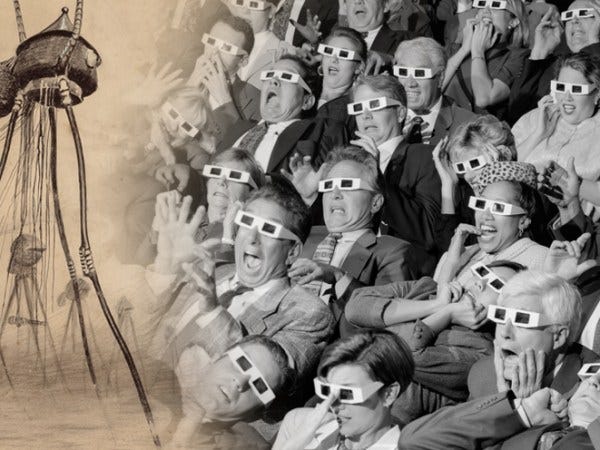



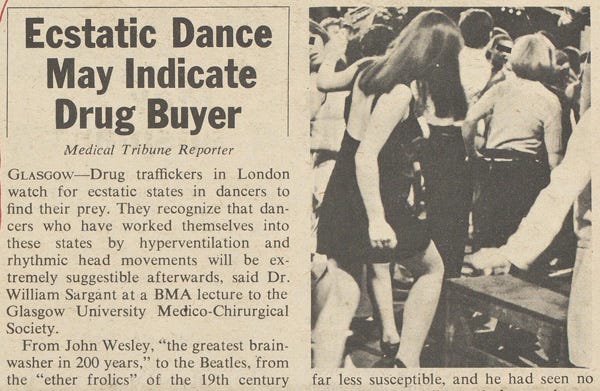
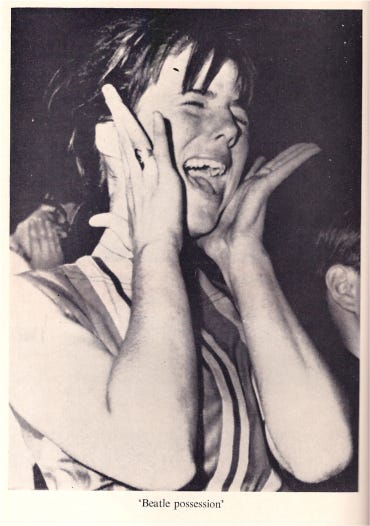



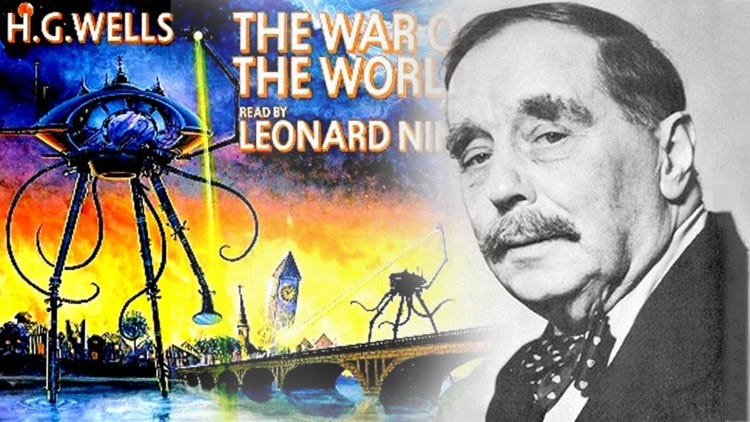
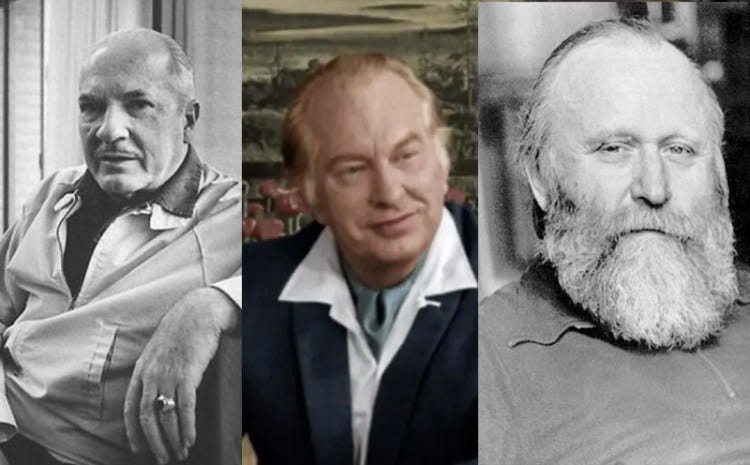


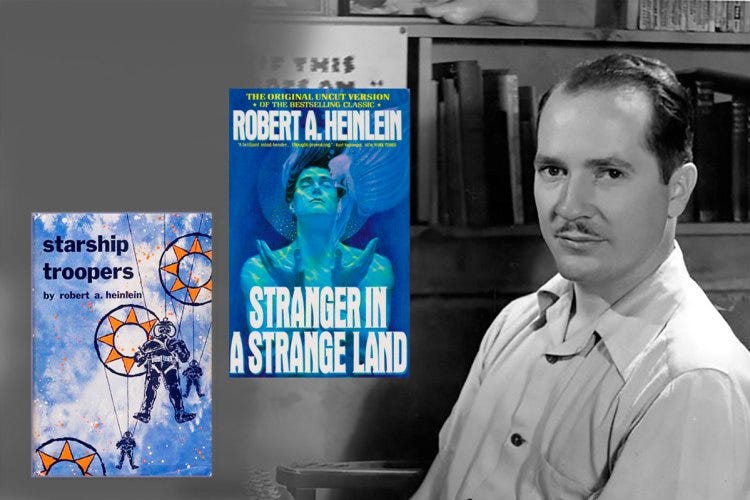
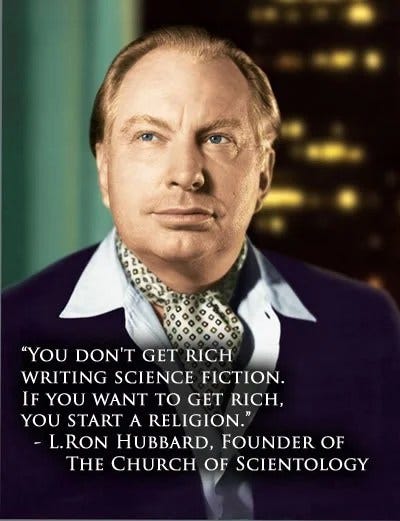
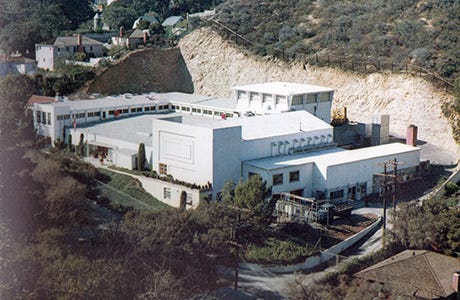
Comments
Post a Comment